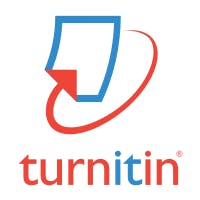Lisa DiMichele has taught writing to all kinds of high schoolers—from inclusion students to honors students, from kids struggling to finish a sentence to future Faulkners. But DiMichele, an English teacher at Henry E. Lackey High School in Indian Head, Maryland, had never faced a challenge like the one she walked into this summer—a classroom full of students who had just failed ninth-grade English.
Reluctant writers? Some of her students had never finished an essay, let alone crafted sparkling prose.
“Many of them,” DiMichele says, “started out with the attitude, ‘Oh, I’m not doing this. This is one of the reasons why I failed English—because I can’t write.’ And I said, ‘Wait a second. I’ve seen you write. You can write. It’s just a matter of expanding your ideas.’
“At that point, they looked at me like I was crazy.”
Through professional development, collegial input, and, chiefly, years and years of trial and error, DiMichele has developed an approach that works for adolescent writers—from the charmingly overeager to the perpetually stuck. And that recipe succeeded again with her summer school class. “Their essays turned out well,” she says. “I was impressed.”
Her secret sauce?
DiMichele believes in step-by-step instruction, sharing models, constant practice, technology tools, and “a lot of encouragement.”
Translate the prompts
She starts by demystifying prompts. “You have to break down the language in the prompt,” DiMichele says. “We put the prompt up on the LCD, project it onto the board, and break it down together. ‘OK, this is English-teacher language. How can we make it more understandable?’
“I have kids come up to the board and underline words they don’t understand and then circle words that they do. So we break that down together and then they have more of an idea of what to write about.”
DiMichele gives her students a scaffold, or outline, to use. She tells them, point by point, what goes in each particular paragraph. And just as they’re about to start writing, she brings in her newest tool.
Embrace the technology
“For the last two years, I’ve been using Revision Assistant, an automated feedback tool that comes from Turnitin, and I just absolutely love the program,” DiMichele says. “It’s a fantastic tool.”
The program gives students instant, targeted, and actionable feedback and allows them to keep their work in one place, saving a version of each draft. The tool’s Signal Check feature makes suggestions that are color-coded by type, “which is great because most kids are visual,” DiMichele says.
The veteran teacher also likes the encouragement her students get while using the tool. “It’s not just negative things,” she says, “such as ‘You need to do this, that, and that.’ It also gives positive comments, such as ‘You have a strong introduction’ or ‘This point shows a connection to your claim.’”
Just do it . . . over and over
Decades of research show that practice is essential to developing good student writing. DiMichele says: “I tell my kids all the time, ‘The more you practice, the better you’re going to become at this. You’re going to be more confident and you’re not going to be as frustrated.’”
Sometimes DiMichele will have her students focus on a single part of an essay. “As a class, for example, we will create a model of a strong thesis statement,” she says. “And then all of the students will rewrite their existing thesis. And then each student will share their new statement with a partner, and both will go through a list of things that need to be present.”
Technology has also helped DiMichele’s students get more writing practice, allowing, she says, for an “amazing number of drafts.”
Though DiMichele is sold on the digital tool, some of her summer school students were initially resistant. “They found it a little overwhelming at first,” DiMichele says. “They were doing multiple drafts and having to edit them. And then editing comments were constantly coming up. A few of the students felt like it was a lot of information at one time.
“I said, ‘You’ve never used this before. Give it a chance.’ And the student who complained most clearly, griping and groaning—I just didn’t pay attention to him. But I’d watch him. And he kept typing and typing and then he finally got it. He started with a couple of sentences and was about to give up and then he wrote a whole essay. And it was a good essay.”
Give great feedback
DiMichele knows that most, if not all, reluctant writers lack confidence. And that magnifies the importance of giving students feedback in manageable doses and in settings where they can hear it. “Usually,” she says, “I will collect different parts of their drafts and make comments. While the kids are moving onto the next part, I’ll conference with them one-on-one rather than give them their papers back. They like the attention.”
What they don’t like, she says, is getting a lot of written comments on their writing. “But if I can sit down with them,” DiMichele says, “and show them a way they can edit what they’re working on, they definitely respond to that. Now, granted, that takes a lot more time. But it’s worth it because then the quality of their writing is so much better and they build their confidence.”
DiMichele also finds that the more specific the feedback, the better. She says Revision Assistant is loaded with a library of writing prompts, and the program differentiates between analytic, argumentative, informative, and narrative essays and tailors its feedback to the type of assignment.
“We were writing an argumentative essay about whether social media is a good or bad thing,” DiMichele says. “One of the big things that kids have trouble with is citing evidence to support what they’re saying. So when they do cite evidence, the digital tool might come back and say, ‘Well, the point is understood but it just needs to be a little more specific.’”
Show, don’t tell
Writing success has many looks. So DiMichele does a lot of modeling.
“I’ll get an example essay,” she says, “and I’ll break it down and show the students each part.” DiMichele finds this a powerful way to convey what good writing looks like and how it works.
“This past school year I was showing them a model essay,” she recounts, “and I said, ‘Is it the most fantastically written essay? No. But it’s an average essay.’ And some of the students said, ‘We don’t think it’s even an average essay. We think it’s below average.’ And I said, ‘What?!’
“They totally threw me off. I said, ‘Tell us why. Tell us where the weaknesses are.’ And I had a couple of the kids in class tell me what needed improvement.”
And that, too, is what writing success looks like.
Writing resources
Though DiMichele has learned a lot about writing instruction through trial and error, she also has some favorite resources she repeatedly turns to for help:
- The Essential Guide to Language, Writing, and Literature
- The Writer’s Studio: Level C by Lesli J. Favor
- Writing Arguments: A Rhetoric with Readings by John D. Ramage, John C. Bean, and June Johnson
- Elements of Writing: Fourth Course by James L. Kinneavy and John E. Warriner
- Purdue Online Writing Lab (OWL)
- Santa Barbara City College Writing Center



